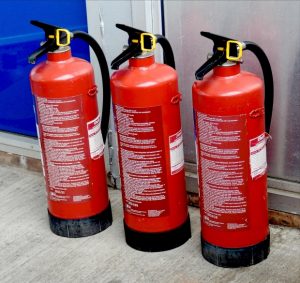A fire at a Pennsylvania nursing home has reportedly resulted in injury to 20 residents, seven of whom were treated for smoke inhalation. No one was reportedly died from complications as of this writing, which is rather remarkable considering the flames stretched several stories high, according local news outlets.
The fire reportedly ripped through the home and forced the center to evacuate more than 140 residents and more than a dozen staffers. The cause of the fire is under investigation.
The question of whether the nursing home could be liable for negligence following a nursing home fire will depend on several factors. These include:
- The cause of the fire;
- Whether the nursing home was inadequately prepared to address the fire/ evacuate residents;
- Whether the facility followed its emergency protocol for handling such incidents (and whether staff was trained to do so);
- Whether anyone was seriously injured or died.
The National Fire Protection Association reports that fire departments in the U.S. respond to more than 2,800 nursing home structure fires each year. These fires resulted in an annual average of 16 deaths and 130 injuries, as well as $6.6 million in property damage.
The issue was being considered all the way back in 1992, when the Senate’s Special Committee on Aging conducted an in-depth analysis of fire safety in nursing home facilities. At that time, there were 3,200 nursing home fires annually. Considering we have more nursing homes today than ever before, the good news is fire safety codes have improved and facilities are getting better at preventing them. But by no means was the fire in Pennsylvania an isolated incident.
In Florida, there was a nursing home fire in June in Pinellas Park that required evacuation of residents. No one was injured in that incident. Then in August, two fires at a Port Charlotte nursing home resulted in the evacuation of 113 residents. In that case, a mattress reportedly caught fire and while crews were responding, another fire broke out in another section of the building. One resident was hospitalized, but later stabilized.
The NFPA’s report indicated that the top causes of nursing home fires included:
- Cooking equipment fires – 54 percent
- Clothes dryer or washer fires – 12 percent
- Heating equipment fires – 9 percent
- Electrical distribution and lighting equipment fires – 3 percent
- Smoking materials – 3 percent
- Intentional – 1 percent
Smoking by residents and sometimes staff is allowed at certain facilities, but the facility has a responsibility to ensure appropriate supervision if that’s a risk they undertake. Earlier this year, a nursing home resident in Missouri died after she was left alone on the nursing home patio to smoke before dinner. The St. Louis Dispatch reported the 83-year-old was later discovered to be on fire, with serious burns on over 20 percent of her body. She died several days later. The nursing home told her family that she was left unattended for just 10 minutes, though the family has publicly raised doubts about that assertion. They also questioned why she wasn’t wearing a fire-resistant smoking apron, which had been assigned to the stroke victim several months earlier. They also wondered whether the attendant who found her had been trained to use a fire blanket to smother the flames.
Although nursing home fires aren’t always legally actionable, family members and loved ones should speak with a nursing home injury attorney to determine whether they have grounds for a claim.
Call Associates and Bruce L. Scheiner, Attorneys for the Injured, at 1-800-646-1210.
Additional Resources:
Pennsylvania Nursing Home Fire Injures 20, Displaces 140+, Nov. 17, 2017, CBS Miami
More Blog Entries:
Challenging Nursing Home Arbitration Agreements, Oct. 27, 2017, Nursing Home Negligence Attorney Blog
 Florida Injury Lawyer Blog
Florida Injury Lawyer Blog





